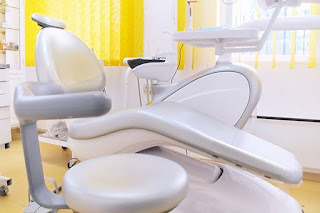 We offer a TMJ treatment in Chicago that can help eliminate or reduce your jaw pain. As a dentist, patients ask us what is the best treatment for their jaw, face, or teeth that are constantly hurting. This is actually a fairly common problem, even though most people are unaware of what is causing the pain or how to treat it. While you can certainly go the normal route of taking ibuprofen or icing your face, you do not have to live like this on a regular basis. Having to take the occasional ibuprofen is fine, but if that has become your daily routine, you need to seek help.
We offer a TMJ treatment in Chicago that can help eliminate or reduce your jaw pain. As a dentist, patients ask us what is the best treatment for their jaw, face, or teeth that are constantly hurting. This is actually a fairly common problem, even though most people are unaware of what is causing the pain or how to treat it. While you can certainly go the normal route of taking ibuprofen or icing your face, you do not have to live like this on a regular basis. Having to take the occasional ibuprofen is fine, but if that has become your daily routine, you need to seek help.Visiting our office is the first place to start because we can examine you and determine whether or not you have TMJ. Some of the signs we will look for are worn down teeth and popping noises when you open and close your jaw. We will also look to see how sore your jaw and face muscles are when you speak or touch them. If we feel that you do have TMJ, we will present you with treatment options.
What is a TMJ treatment?
We recommend a non-invasive treatment solution that works by addressing the source of your TMJ symptoms. Very often, grinding or clenching your teeth at night will cause soreness in the jaw or face. Most people who do so never realize that they are. Since it happens in your sleep without causing much noise, your partner may not notice you grinding your teeth either. The only thing you will notice is how you feel when you wake up the next day. If we feel that this is happening after examining and speaking with you, we will recommend that you wear a night guard to prevent your teeth from touching. Our treatment solution is that simple.How a TMJ treatment works:
When you visit our Chicago dental office, we will make an impression of your mouth and take measurements. That information will be sent to the dental lab so they can create a night guard to your exact specifications. Over the course of a couple of weeks, your new oral appliance will be created. It will be designed to fit you perfectly and securely. This is important because it needs to remain in place as you sleep without becoming loose since that could cause you discomfort or alarm in your sleep. All you need to do is wear it every night when you go to bed. We have found that most of our patients wake up feeling much better and that the soreness they felt is all but eliminated. By wearing it for a couple of weeks, your soreness should go away entirely. The only exception to this is if there is an additional factor causing your TMJ symptoms.For more information about TMJ treatment, call our Chicago office and schedule a consultation.







 When you visit our
When you visit our  A
A  Among restorative procedures,
Among restorative procedures,  Our
Our  In our office, we provide
In our office, we provide  As a
As a 
 An experienced
An experienced